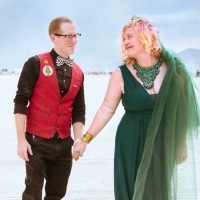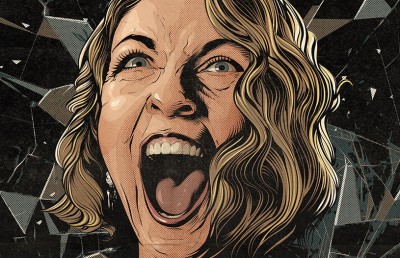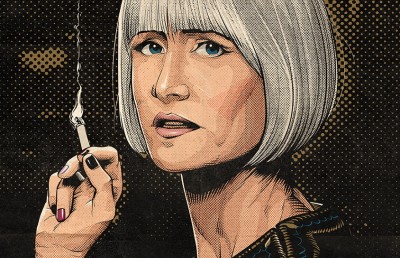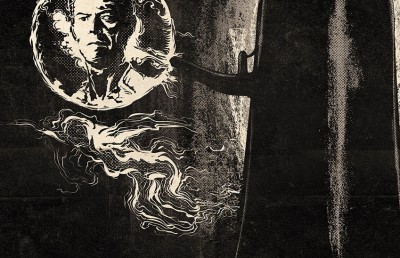The Fifth and Sixth Seasons of Twin Peaks, Plus the Two Holiday Specials
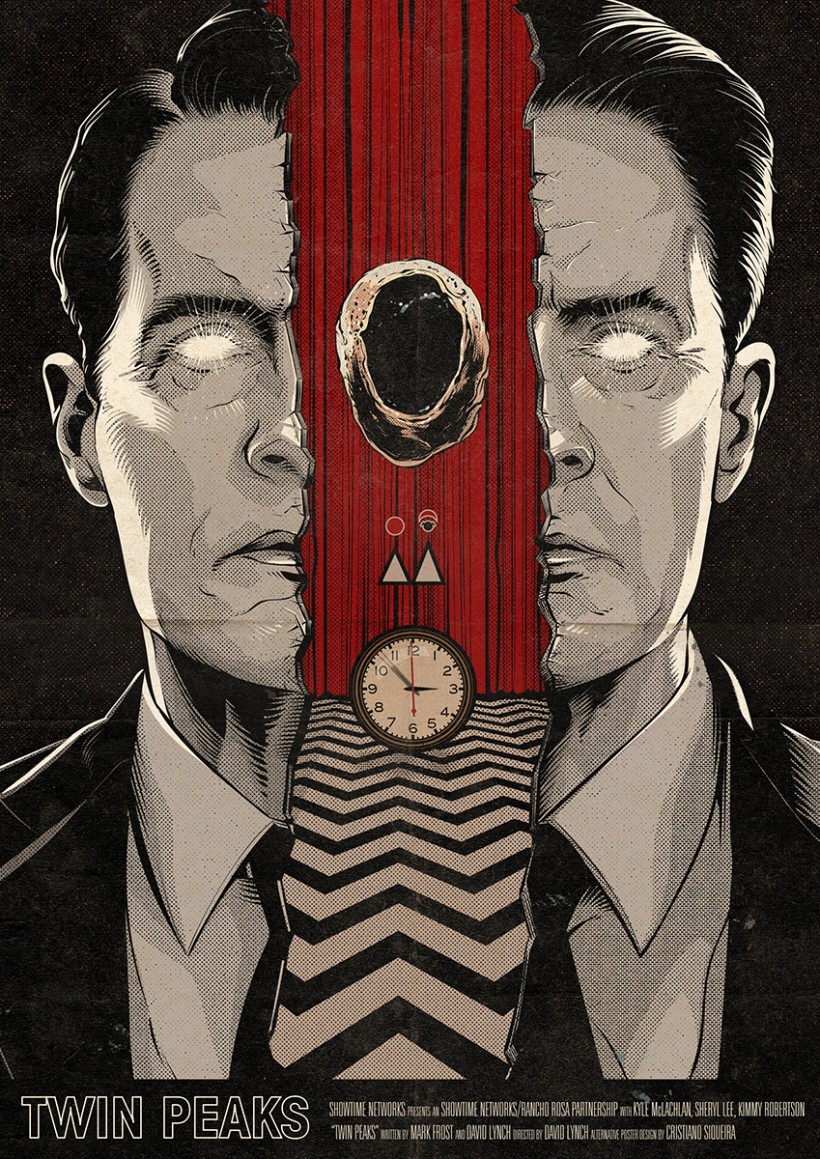
Image courtesy of Cristiano Siqueira
Last year, I wrote an essay arguing that the original 29-episode run of Twin Peaks could be divided into four smaller seasons, each with their own beginnings and endings, each with their own thematic fixations, each with their own premieres and finales. I called it “The Four Seasons of Twin Peaks.” I’m here today to argue that the same rubric can be applied to the 18 parts of Twin Peaks: The Return, which breaks down into a fifth and sixth season, punctuated by two BBC-style holiday specials. (I’ll further argue that the series’ original run includes one of its own holiday specials.)
Let me explain:
The original run of Twin Peaks, although stylistically daring and oftentimes aesthetically abstract, told four relatively straightforward stories. Under my organization, the “first” season (from the pilot to episode 1.7) introduces us to the kooky town of Twin Peaks and sketches out its basic relationships, all of this done in service of the series’ initial story engine: the investigation of the murder of Laura Palmer.
The “second” season continues to follow the investigation while deepening the show’s mythological underpinnings. Major Briggs explains that the small town has been the subject of governmental intrigue and monitoring for many years. The identity of Laura’s murderer is revealed as an evil spirit that can inhabit human hosts—in this case, that of Laura’s father, Leland. My proposed second season reaches its climax in episode 2.7, “Lonely Souls,” when Leland, as possessed by BOB, is revealed as Laura’s killer.
My proposed “third” season runs from episodes 2.7 to 2.14, a stretch that includes some of the series’ least distinguished elements, such as Nadine’s reversion to a bubbly high school cheerleader, Ben Horne’s conversion to a Confederate war general, and James’ demotion to cringeworthy standalone B-story. Oof. But things pick up once Windom Earle, heretofore an unseen menace, formally enters the storyline in my third season finale, episode 2.14, “Double Play.”
Earle’s reemergence, powered by Kenneth Welsh’s chilling, energetic performance, adds much-needed life into Twin Peaks’ final stretch, which runs from episode 2.15 to the now-legendary season (then series) finale, “Beyond Life and Death.” My “fourth” season of Twin Peaks ranks among the strongest as it takes the deepest of dives into the series’ venerable mythology. Project Blue Book, hinted at for more than 20 episodes, pays off when Maj. Briggs vanishes into the Black Lodge, his disappearance followed by Windom Earle’s abduction of Annie Blackburn, with whom he absconds into the aforementioned nether-realm. Agent Cooper pursues him into the Black Lodge, where BOB thwarts them both. BOB swats Earle like a fly, then generates a doppelgänger of Cooper that serves as his dark chariot back into the real world. Good Coop ends the original series—and my “fourth” season—stranded between worlds.
A brief note on terms: In this essay, I’ll refer to the original, benevolent incarnation of Dale Cooper as “Good Coop,” even when discussing him in his Dougie Jones persona. I’ll refer to the evil, BOB-inhabited incarnation of Cooper as “Evil Coop.” I’ll refer to the show’s original 29-episode run as the “original” series or seasons, while referring to the new season as the “revival” season. I’ll refer to Fire Walk With Me by its name.
Twin Peaks fans waited 26 years for the resolution to the cliffhanger of “Beyond Life and Death,” wondering what havoc Evil Coop would wreak and whether Good Coop would ever escape his confinement. We were given a few tantalizing hints in the prequel film Fire Walk With Me, a project whose sensibility, structure, and tone largely informed the revival season, but depending on your view of Twin Peaks: The Return—and its tie-in novels, The Secret History of Twin Peaks and The Final Dossier—we never got answers to either of those questions.
Or any questions, really. Hear me out:
To be sure, I’m exaggerating, but when I pondered how to organize the revival season into smaller seasons, something fundamental occurred to me: The revival season’s episodes extend the same essential storyline and occupy the same universe as the original series’ episodes. (This concept is key, and I’ll circle back to it shortly.) The revival season is a continuation of the original series, even though structurally, it differs from the original series in almost every way. In the original series, important storylines are introduced in a familiar fashion: the murder investigation follows law enforcement officials as they map the crime scene and interrogate persons of interest. The FBI gets involved. An autopsy is conducted. Clues are gathered. Leads are followed. These leads help introduce the town’s other major players, all of whom are suspects, and all of whom populate a densely inter-latticing network of soapy rivalries, crushes, and grudges. The quality of the storylines varies, but for the most part, events and characters are introduced according to a knowable logic, granted their proper weight in the narrative, and dispensed with in a way that (by and large) feels fair. Windom Earle is a villain who’s eventually vanquished. Audrey Horne is a mischief-maker who continually lands herself in trouble. Coop is a hero who bravely ventures through the gates of hell for the woman he loves. James is a doofus who does doofy things. (Just kidding.)
But in the revival season, storylines are introduced with the veneer of importance, only to later be revealed as meaningless. Seemingly important characters are introduced, presented as leads, given no development, and then dispatched from the narrative when it’s convenient. Other manifestly important characters are held in reserve, presented as bizarre afterthoughts, then dismissed from the proceedings. Important turns are interminably delayed, then executed when it’s convenient. The very ideas of expectation and nostalgia are bandied about, both to generate affection for certain characters and storylines, while in other cases, they’re used simply to frustrate—or dare I say, scold—the audience for even having expectations or feeling nostalgia in the first place. In contrast with the original series, the revival season is uniquely unconcerned with delivering on traditional storytelling pleasures.
It’s also unquestionably the best show of the year, and probably one of the greatest achievements in filmmaking history. I know I sound like I’m bringing the hammer down on the revival season, but rest assured, I loved it even when I was frustrated because (I’d argue) that was the point. Needless to say, all of this is a result of the collision between the storytelling sensibilities of Lynch and Frost. Lynch is withholding and mischievous, Frost generous and straightforward. The collision of those two voices is and has always been magical—so let’s talk about that magic.
The revival season was at once a continuation of the original series’ narrative and a response to the hoopla surrounding it. On an extratextual, “meta” level, Lynch and Frost were in a dialogue with the original series and its obsessive fandom, which includes me. They asked why we cared about certain storylines and certain characters. They asked why we needed to find out what happened to Cooper and why we wanted to return to both Twin Peaks the show and Twin Peaks the imaginary town. This dialogue informed the textual narrative of what was literally happening to show’s characters and settings, including the Lodges, Waiting Room, their related nether-realms, and even Twin Peaks itself. For me, that’s the key to grokking the revival season, because at a glance, Twin Peaks looks very much like two completely different projects: the original series is an unusual but fairly straightforward paranormal soap opera, the revival season a sequence of disjointed experimental films that riff on what came before. At a glance, you might think they’re meant to be watched and analyzed as separate enterprises.
But they’re not separate. They’re one. Remember when I made the no-brainer observation that the revival season was a direct continuation of the original? If we accept that as axiomatic, then the show’s full 48-episode run starts to come into focus. When Lynch and Frost teamed up to create Twin Peaks, they opened a dialogue with television as a whole, importing character-types and storytelling tropes from traditions as diverse as Dynasty, The Fugitive, and The Andy Griffith Show (as well as Frost’s grandest achievement at the time, Hill Street Blues), remixing them in a narrative that looked normal, but which was subject to the occasional burst of chaos wrought by Lynch’s injections of dream logic and Buddhist thought. When they reconvened years later to create the Twin Peaks: The Return, they reopened their dialogue with television in grand fashion. I’d argue that Lynch and Frost were instrumental in siring the current golden age of television, given that Twin Peaks is the common ancestor to scores of modern classics ranging from Mad Men to The Sopranos, among many others.
But their renewed dialogue with prestige television came with one important twist: they also reopened their dialogue with Lynch’s filmmaking. The original series was as much informed by Frost’s storytelling strengths—good dialogue, sturdy plotlines, soapy twists and turns—as it was by Lynch’s filmography at the time. The original Twin Peaks was very much the product of the Lynch of Blue Velvet and The Elephant Man, while the revival season is (I’d argue) almost entirely the product of the Lynch of Lost Highway, Wild at Heart, Mulholland Drive, Fire Walk With Me, and—most important—Inland Empire. (Frost’s influence can be felt, to be sure, but it’s mostly expressed through The Secret History and The Final Dossier.)[[See Joel Bocko’s analysis of Frost’s influence on The Return by way of his novels in this issue here.
By engaging with these elements—television, their own work, the original seasons of Twin Peaks—not as holy writ but merely as a curious cultural artifacts, Lynch and Frost wound up delivering giving us three products that work on two levels. The original series works as both avant-garde cinema and soap opera; the revival season works as a response to the original series and a straight continuation of it; and when viewed as a whole—from 1990’s pilot to 2017’s “What Is Your Name?”—Twin Peaks is a 48-episode series that works both as a meta-commentary on expectation and nostalgia and as a weirdo paranormal shocker about an entire universe that’s slowly disintegrating.
In short, watching the full series, which I’ll call Twin Peaks: The Whole Shebang, from beginning to end is like watching a show that’s slowly going insane. For many in the audience—me included—this was a little too much to take at first. But I’d argue that my notion to split the larger show into several seasons helps make all this easier to understand and digest. Lynch and Frost tangle with some big ideas, but when you break their masterwork into smaller portions, those big ideas get a little less daunting.
So let’s talk about the fifth and sixth seasons of Twin Peaks, plus the holiday specials—all three of them.
Season Five: “The Two Jailbreaks”
Episodes 3.1 through 3.7
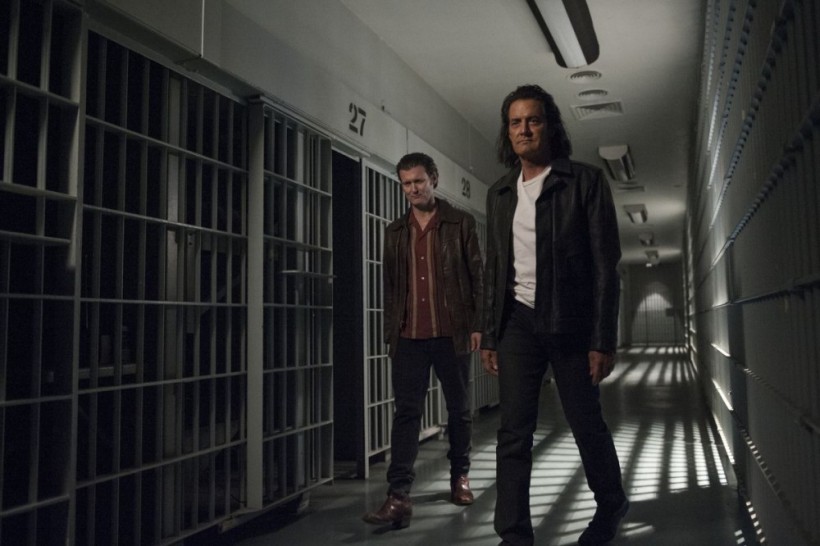
One of my central contentions in “The Four Seasons of Twin Peaks” is the idea that Twin Peaks should never have been saddled with a standard, 20-plus episode network season order. It’s just too much real estate to cover for a show like Twin Peaks, which is far more suited to the leaner season orders of AMC or, better yet, the BBC. To wit, shows on AMC tend to run for about 13 episodes, with tight, propulsive storylines and very few standalone episodes. On the BBC, shows have even less filler, running only for as long as they need but with the added bonus of holiday specials. That rubric informed my original divvying up of Twin Peaks, which perfectly shakes out into seasons of 7-9 episodes.
Season five is no exception, running for seven episodes and generally introducing us to the revival season’s unusual new tone and feel. It’s a survey of Lynchian imagery and settings. The season opens in a sitting room that could be tucked behind Eraserhead’s famous radiator and depicts a classically Lynchian baffler that plays like Samuel Beckett adapted a numbers station broadcast. The “black box” observation room in New York recalls Michael J. Anderson’s communications chamber in Mulholland Drive. Evil Coop inhabits a southern gothic underworld that’s straight out of Wild at Heart or even the rural locales of Inland Empire. I’d also wager that Evil Coop would get along famously with Mulholland Drive’s Cowboy. The revival season continues this survey over the course of its run.
Season five also introduces us to revival season’s central devices: that of expectations renewed, sustained, and denied. The first four episodes—fittingly aired across one electrifying premiere night—mostly follow Special Agent Dale Cooper as he struggles to escape the Black Lodge and its attendant spectral realms. Fully dozens of tantalizing ideas are introduced in these opening scenes, some of which—like the identity of Naido—are paid off, but most of which vanish into the revival season’s larger narrative like jetstreams trailing to the horizon. The geography of the Lodges—the larger scope of which was hinted at in Fire Walk With Me—is developed: Good Coop leaves the chevron-floored Waiting Room and slips across realities and “non-existence” before he lands in the “Mauve” Lodge, where he encounters the eyeless, wordless Naido, gets a glimpse of Maj. Briggs galaxy-sized head, and escapes back into our world through a power outlet.
Good Coop’s escape is the first of the fifth season’s two jailbreaks—and the first hint that Lynch and Frost are playing with our expectations. After 26 years, Good Coop basically just blunders his way out of the Black Lodge, re-emerging into our world as a shell of his former self, the much-maligned “Dougie Jones” persona. Twin Peaks fans had been fantasizing for 26 years about how Good Coop might escape the Black Lodge, and when he did, it was both dazzling and disappointing. His voyage across Lodges, realities, and non-existence gave us some of Lynch’s most gorgeous abstract filmmaking since … well, since “Beyond Life and Death,” while the nature of his escape felt arbitrary and unearned, to say nothing of the initial disappointment of watching Good Coop being relegated to the undignified status of doddering house husband. (More on Dougie later.)
In tandem with this storyline, Evil Coop is revealed as an underworld mob boss of some repute. His actions across the initial episodes unveil more of the rules behind the Lodges—apparently, after a quarter-century, Evil Coop is due to be summoned back to the Black Lodge. To forestall his return, Evil Coop constructed a duplicate—or “tulpa,” as we later learn—of himself, Dougie Jones. When the time comes for his return, Dougie is called in his stead, allowing him to remain on earth. But this changeover is fraught with peril for Evil Coop. When Dougie is called to the Black Lodge, dimensional turbulence causes Evil Coop to barf up a lapful of garmonbozia while he rolls his muscle car. The wreck eventually lands him in jail, where some familiar faces from the FBI—Gordon Cole, Albert Rosenfeld and newcomer Tammy Preston—interrogate him in one of the revival’s most memorable scenes. (I still get chills when I think of the Kyle MacLachlan’s dead-eyed stare behind that bulletproof glass.)
But I’m moved to ask some annoying questions: why, after being AWOL for 26 years, would a former FBI agent be put in a maximum security prison and generally treated like Hannibal Lecter? Why—or more important, by what legal mechanism—is he further kept there? Given that he later frees his confederate in crime Ray from prison only to later kill him, are we to believe that Evil Coop landed himself in jail on purpose? If so, why does he wait until the fifth-season finale, “There’s a Body All Right,” to free himself, given that he had the ability to free himself and Ray literally any time he wanted?
I ask these questions not to be annoying—well, maybe a little bit—and neither do I ask them to quibble about the plot. Indeed, the revival season is about many things, but it’s only fleetingly about its plot. It’s far more about a vibe, a tone, and how it makes you feel. (There’s a larger discussion to be had about that divide. Many shows are about what they’re about, while others are far more about how they make you feel. Game of Thrones is essentially about what happens in it, while American Gods is more about how it makes you feel.)
Twin Peaks’ fifth season plays a game with our expectations. Superfans love to dissect every image and bit of lore associated with the show, so season five gives us troves of new lore to chew on—the black box, the new Lodges and nether-realms, the mysterious transmission box in Argentina, the new owl petroglyph presented to Darya before her demise, Evil Coop’s “phreaking” powers, more pages from Laura Palmer’s diary, the Pentagon-wide scope of Project Blue Book, new maps, secret code numbers, and an intriguing new storyline that echoes the original series’ hook: the murder of a town librarian in Buckhorn, S.D.
The Buckhorn storyline introduces a slew of new characters, most notably the Buckhorn cops and the hapless Bill Hastings, played with impressive imaginative dexterity by an older and wiser Matthew Lillard. This storyline once again stokes and plays with our expectations and nostalgia. We’re led to think that history is repeating itself, that the forces of the Black Lodge are once again seeping into our reality and driving a heretofore good-hearted family man mad. Once again, we’re given a glimpse into the daily life of a small town, with all of its internecine rivalries and star-crossed relationships. We learn that Hastings himself has been drawn into the Black Lodge, his voyage having driven him bonkers enough to start a conspiracy website about his experience. (Hilariously and somewhat ominously, Showtime built a real-life version of this website to promote the show’s merch)[[See Randolph Jordan’s essay in this issue for more on the Search for the Zone website here.
But as befits the fifth and sixth seasons, the Buckhorn storyline arouses our expectations but in the end doesn’t amount to much. (Hastings is unceremoniously dispatched early in season six.) The Buckhorn storyline is almost—almost—the perfect expression of the revival season’s raison d’etre, but that title falls to the revival’s most important new element, I’d argue; a character who’s at once something old, something new, something borrowed, something blue:
Diane.
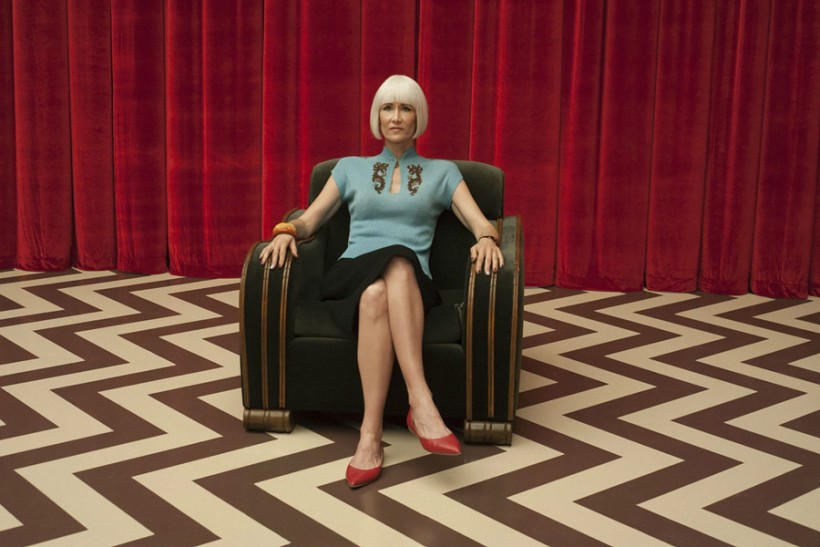
For me, the Diane character perfectly embodies the thesis of the revival season. She is Twin Peaks: The Return. She’s a classic piece of Twin Peaks lore, a character only referred to by name in the original series, but who looms large over its legacy. The rumor mill long held that Lynch intended to cast Laura Dern, one of his greatest leading actors, in the role. When news broke that Dern had joined the cast, fans salivated over the possibility that this most sublime confluence of material and talent would finally come to pass. In season five’s penultimate episode, “Don’t Die,” that promise is finally paid off: Laura Dern appears as Diane in one of the most memorable reveals in television history.
But ask yourself: Who is she? What is she like? What was her relationship with Cooper like? Does she have carpal tunnel from transcribing all his tapes? Most important, ask yourself this:
What does Diane do over the course of season five?
The answer, I’d argue, is nothing. Like everyone else in the FBI storyline, Diane basically just hangs out in that South Dakota hotel, sends a few text messages, and swears a lot. Lynch and Frost use their magnum opus as a vehicle through which to open a dialogue with the audience about expectation and nostalgia. They ask us why we like to obsess over the lore of Twin Peaks. They ask us why we even wanted to see Diane in the first place. They also know that casting fan-favorite Laura Dern as Diane would instantly win the character oodles of audience goodwill, even though they didn’t do any of the hard work needed to develop Diane as a character—and yet, she’s still one of the best parts of the fifth and sixth seasons expressly because she’s the perfect avatar for what they’re trying to accomplish.
In short, Lynch and Frost are slowly building the argument that expectations and nostalgia are folly, and to that end, they create a literal empty vessel into which we can stuff our expectations and nostalgia. Her name’s Diane.
I know that sounds harsh, but hang in with me, because Diane’ll pay of later.
Needless to say, this mischievous exploitation of our expectations and nostalgia informs season five’s other major “storyline,” the plight of Good Coop as Dougie Jones. I put “storyline” in scare quotes because it’s a storyline in name only, with no discernible progression or conflict. It centers on a shrill performance from a doggedly game Naomi Watts and a cut-rate subplot of office intrigue at Dougie’s insurance company.
Sadly, the revival season’s weakest storyline is also the one that includes the overall series’ lead character, Good Coop, and as much as it pains me to say this, I don’t think this was a result of Lynch and Frost’s meta-mischief-making. I just kind of think this storyline could’ve used some more time in the oven. It isn’t without its virtues, which I’ll discuss later, but let me offer this: I don’t mind that the showrunners wanted to give us a Twin Peaks without Dale Cooper. What bugs me is that the Dougie Jones storyline was so lacking in their usual thermonuclear level of invention. What a shame that the new season couldn’t have depicted Good Coop wandering the countryside in his Dougie Jones persona, crossing paths with any number of Lynchian eccentrics. Not only would it have enhanced the storyline surrounding their lead character, it would have given Lynch the chance to further expand the survey of his previous works by revisiting the tone and imagery from The Straight Story. Instead, episode four of season five kicks off one of the longest, most frustrating slogs in television history: the wait for Dale Cooper’s return. Once again, the showrunners interrogate us about our fandom, our expectations, our nostalgia. Why did we want to see Cooper return in the first place? As season five wore on, we looked at each other and asked ourselves another important question:
If he doesn’t return, will we be okay?
We’ll get to that.
Season five ends with the second jailbreak, that of Evil Coop and Ray from the federal penitentiary. The imagery in this sequence echoes that of classic television—the grimfaced, helpless warden (a stellar James Morrison) looks on as Coop and Ray vanish into the night. It’s a perfect season-ending cliffhanger, except for the fact that there’s really nothing to worry about.
But should there be? Do we even need to be worried about the story in order for Lynch and Frost to continue their interrogation? More to the point, do we even need the story to progress at all in order to be engaged, entertained, dazzled? As we’ll discover in the revival’s first holiday special, the answer is no.
Holiday Special: “Got A Light?”
Episode 3.8
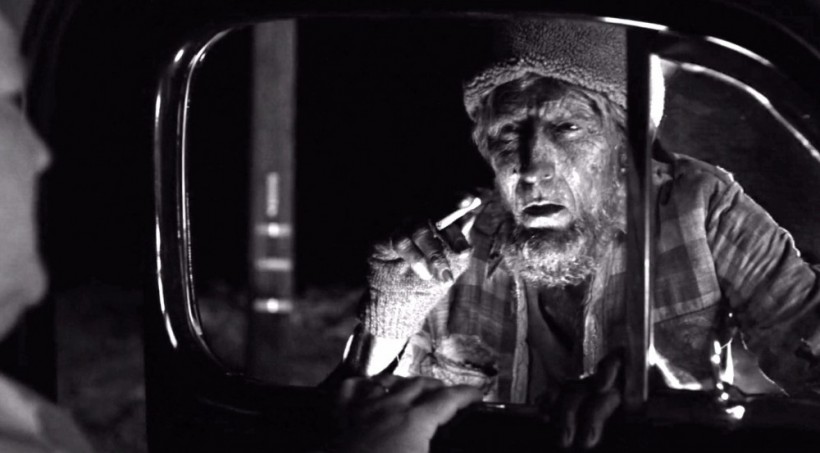
I’ve not seen many BBC holiday specials, but I like their function. Typically standalone episodes, they work both as bonus content for the fans and as an expectation-free playspace for the showrunners.
In the case of Twin Peaks: The Whole Shebang, I’d argue that we got three holiday specials, all three of which are connected in hyperspace. Let me explain:
I’m the last person who should explain wormholes to anyone, but the general idea is that a massive object, typically a black hole, stretches spacetime to such an extent that it joins two distant points in space—possibly even two points from different universes. The three holiday episodes of Twin Peaks are:
“Beyond Life and Death.”
“Got A Light?”
“What Is Your Name?”
These three episodes depict dimensional disturbances of such magnitude that they stretch spacetime to the breaking point. Indeed, if you were to sketch these three episodes’ on a graph, they’d be connected by a pair of wormhole-parabolas, starting with “Beyond Life and Death” and looping over to “Got A Light?” before making one final swoop over to “What Is Your Name?”
Like most elements in Twin Peaks, these episodes serve two functions: they act as bridges between each other while also functioning as bridges in the musical sense, pausing the action and deepening the show’s themes, while simultaneously giving us a chance to catch our breath—and take it away.
There’s very little I can add to the ecstatic critical consensus that surrounds “Got A Light?” My reaction to the episode was to fall to my knees and shield my eyes from its magnificence. By riffing on the closing sequence from 2001: A Space Odyssey, Lynch shows us the origin story for BOB as only he could—by blowing a hole in reality so big that a demon seeps in. In response to BOB’s incursion, two ancient celestials—the Fireman and Lady Dido—rise from their slumber to send an angel to earth.
That angel is none other than Laura Palmer, and once again, as I reflect on the revival season, I’m moved to ask myself why this choice felt so right, proper, and true. Why on a fundamental story level, did it feel so right for Laura to have been dispatched to earth by Lady Dido in the manner of Dr. Seuss’ Oh, The Places You’ll Go? The reason is anthropic, circular, tautological. Laura Palmer is by rites the gods’ answer to BOB because Laura is the central character in Twin Peaks. No other reason is needed.
But the sequence with the Fireman and Lady Dido isn’t all there is in “Got A Light?” No, the episode delves deeper into the show’s mythology, giving us our first looks at the hobgoblins of Twin Peaks, the fearsome Woodsmen. In the one scene that pushes the story forward, the Woodsmen revive Evil Coop after Ray shoots him. The episode ends by flashing back to the 50s, where they descend on an unsuspecting small town and murder several citizens—but not before first putting them to sleep by hijacking a radio station and reciting the “Water and the Well” verse, itself a kind of poetic echo, a thematic rhyme with the famed “Fire Walk With Me” verse.
The revival season had already tested our patience by slowing the pace of its storytelling to a crawl. In “Got A Light?” the showrunners demonstrate that the mythology of Twin Peaks is durable enough to sustain a hourlong aria that moves the story forward barely a millimeter, but which deepens the experience by several thousand lightyears.
Happy holidays, Peaks fans, because it only gets more intense from here.
Season Six: “Curtain Call”
Episodes 3.9 to 3.17
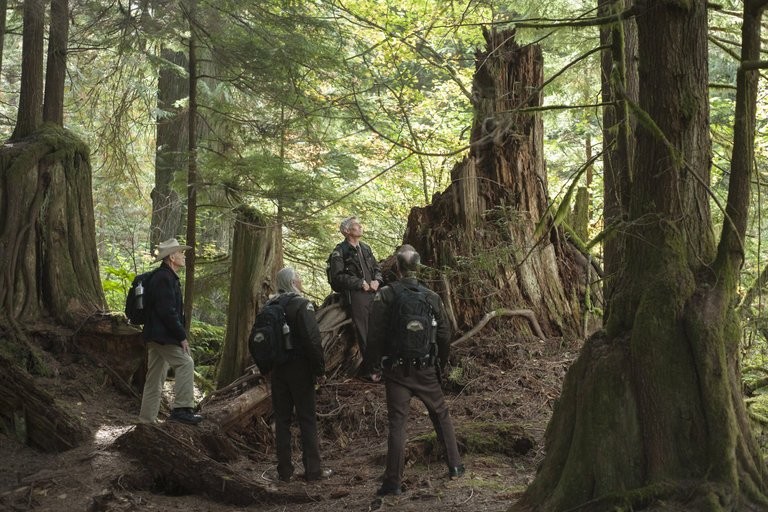
Twin Peaks’ sixth season pays off the promises of its fifth by essentially reneging on them all. In doing this, the revival season makes, for me, its clearest argument—that nostalgia’s a scam and that we should let go of our expectations. If we do, the rewards are immeasurable.
Virtually every storyline set up in season five is revisited in season six but rarely in the way we expect. Certainly none of the show’s major storylines are paid off according to any fan theory, and moreover, none of them are paid off in any way that fulfills any of our expectations. Bill Hastings dies in season six’s third episode, “There’s a Fire Where You Are Going,” essentially ending the Buckhorn storyline. Evil Coop continues his molasses-like progression toward (presumably) Twin Peaks, exchanging the occasional text message with Diane. The FBI guys continue to hang out in that hotel. Good Coop keeps being Dougie. There’s some progress, of course. Cole and the Blue Rose task force slowly discover that there might be more than one Cooper, as do Frank Truman and the local cops in Twin Peaks.
But again, I’d argue that the revival season isn’t about what happens. It’s about that dialogue with (and interrogation of) the audience. We’re tacitly asked again and again why we want—or expect—certain things, and over and over, the advice we’re given is simply to let go and just be.
Ironically, this sentiment is best expressed in the revival season’s clearest moment of fan service, when Big Ed and Norma finally get together. As in every other storyline, the showrunners stoke our nostalgia and expectations. We love Big Ed and Norma, and we always wanted those two kids to get together. For most of seasons five and six, it looks like their relationship is doomed, that Norma’s destined to wind up with Walter, the charmless moneyman behind the RR Diner franchise. But just when all hope seems lost, we get to the sixth season’s seventh episode, fittingly titled, “There’s Some Fear In Letting Go.” Nadine finally frees Ed from his good-hearted (but misguided) commitment to her, but when he goes to propose to Norma, she asks him to wait a minute.
And he does.
Big Ed pulls up a stool at the RR, gets himself a cup of coffee, closes his eyes … and lets go. A moment later, Norma’s hand slides onto his shoulder. He smiles, turns to her, and asks her to marry him.
This goes without saying, but this scene had me in tears. I’m an old softie, and Big Ed’s maybe my favorite character, even over Coop. But on reflection, this moment best expressed the answer to Lynch and Frost’s interrogation. They’re basically telling us how to watch the show. We all went into the revival season with so many expectations, all of those expectations tinted by nostalgia. In response, Lynch and Frost asked us why we felt those things. Over and over again, they asked us. They asked us not only why we had those expectations—they asked us if we even needed to have those expectations.
We wanted Twin Peaks back because we wanted Dale Cooper back. In response, Lynch and Frost took him away.
We wanted Twin Peaks back because we wanted the irresistible storylines back. In response, Lynch and Frost gave us a never-ending series of puzzles with no solution, with some episodes so still in their execution that it drove us mad.
We wanted Twin Peaks back because we wanted to find out what happened to Audrey after the explosion. In response, Lynch and Frost gave us the idea of Audrey, placing her in some of the revival season’s most perplexing—and in one case, scolding—scenes.
We wanted Twin Peaks back because we wanted to return to the cozy confines of its titular town in all of its deep-finished wood glory. In response, Lynch and Frost showed us a town gone wrong. The Twin Peaks of seasons five and six is glitching, derezzing, malfunctioning, disintegrating, its older citizens graying and ineffectual, its younger citizens hooked on drugs, puking in cars, and scratching at rashes.
But if we let go and just be, then the fifth and sixth seasons of Twin Peaks will unlock their riches for us … which brings us to the sixth season finale and the third holiday special:
Season Six Finale: “The Past Dictates The Future”
Episode 3.17
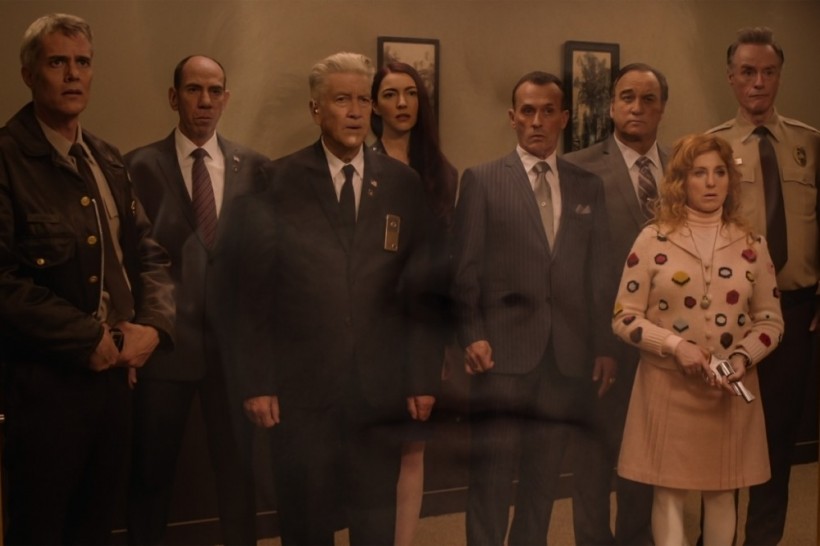
The sixth season finale of Twin Peaks goofs on the very notion of narrative expectation, bringing all of its storylines to a head in the sheriff’s office. Evil Bob arrives, shrouded in menace, and sits with Sheriff Truman. Good Coop, finally awakened from his long slumber, speeds back to Twin Peaks with everyone from the Lucky 7 storyline in tow. Everyone else, including Naido, is pretty much in the jail downstairs. Lucy plugs Evil Coop and unleashes the orb of BOB, keying off a battle between BOB and one of the show’s new arrivals, Freddie Sykes.
As with most of the revival season, Freddie’s role stokes and subverts expectation. We get a glimpse of him and his green hand in season five’s second episode, when he and James roll into the Roadhouse. I tell you—that green hand was an glaring a symbol as a shotgun on the mantlepiece of a Chekov play. You knew it was going to pay off … and pay off it did in a sequence that is so cringe-inducingly terrible, it had to have been intentional. After his majestic origin story in “Got A Light?,” BOB is dispatched in a boss battle that would ill-befit an off-market Super Nintendo game. (When it came to the Dougie storyline, I think Lynch and Frost may have just lost some of the heat on their fastball, but they knew what they were doing here.)
For me, the Freddie/BOB battle rhymes with one of season six’s most polarizing scenes, the capper to its eighth episode, Audrey’s dance. Lynch and Frost’s mischief sometimes has painful results for fans, but they really twist the knife with Audrey. At least with Coop, we got to see him escape the Lodges, but with Audrey, we get only the slightest sense of her fate. She appears in a series of dreamlike, elliptical scenes with her husband (played with admirably dry humor by Clark Middleton). Her “storyline”—there are those scare quote again—culminates with a hallucinatory trip to the Roadhouse, where she re-enacts one of her most famous moments from the original series, her trippy, swaying dance in the RR Diner. I could practically hear Lynch and Frost scolding us, asking us why we wanted Audrey back, why we wanted to see her dance again, why we couldn’t just let her live in the past, forever trapped mid-explosion. Instead, we get a glimpse of what a sad and lonely adult Audrey’s grown to be, with the slightest, most maddening hint at her fate. Is she in a mental institution? Is she still in a coma? Is she inhabiting the literal creative headspace of Lynch and Frost, her character’s essence briefly called into being like the Rosencrantz and Guildenstern of Tom Stoppard?
Similar to the scolding tone of the Audrey’s dance scene, Freddie’s battle is a knowing subversion of our expectations. For all the fans that had hoped for a final showdown between Good and Evil Coop, we were forced to watch with Coop on the sidelines as a character barely two episodes old destroyed the show’s unstoppable avatar of evil … by punching it really hard.
I was perplexed and pissed off at the time, but now I’m laughing like crazy, even though I also think BOB could have met a more distinguished end, and I for one didn’t want to see Audrey dance again. I just kind of wanted to see what she was up to.
But—and I know I keep saying “but”—if we simply let go of our expectations and nostalgia, the wonders of seasons five and six present themselves. When I let go and just be, I’m moved to reflect on how powerful Audrey’s role is. Lynch and Frost didn’t just bring Audrey back; they put the audience in the drivers seat for the mental breakdown of a stunted child who grew into an unstable adult. They did it with humor and haunting energy, calling on Sherliyn Fenn to deliver one of the revival’s best performances.
When I let go and just be, I’m forced to admit that Freddie’s mano-a-mano with BOB is pretty damn hilarious. I mean, is Freddie’s power any more or less goofy than BOB himself? Lynch added BOB to Twin Peaks’ cosmology when he spotted Frank Silva in the background of a shot. His very existence is something of a joke; that his send-off is so risible feels righteous.
When I let go and just be, my skin prickles with gooseflesh as I remember that seasons five and six are packed with scores of perfect moments that run the gamut from sublime to terrifying: Kind old Andy cradling Naido in his arms at the base of Jackrabbit’s Palace, the ground covered in mist and moss—a sorrowful tableau right out of an Alan Lee painting. Carl Rodd watching a child’s soul ascend. The Woodsmen escorting Evil Coop through a succession of dream-portals to his audience with Phillip Jeffries. Coop and Diane’s dark coupling in another dimension. Laura’s final shattering scream.
That said, if there’s one scene that captured everything I loved about the revival season, it was the closing Roadhouse scene in season five’s second episode. You know the one. To the otherworldly tunes of the Chromatics’ “Shadow,” we drop in on Shelly again after all these years, and she looks great as she’s laughing and surrounded by friends. After taking a shot, she spots James—maybe the most hapless and beleaguered of the show’s regulars—and says he’s always been cool. And y’know what? He has always been cool, because he’s a part of the legend, same as Shelly, same as Bobby, same as Laura … and same as Coop. This scene put me in the most dreamy of happy places when I first saw it, but at the same time, the lyrics to “Shadow” weren’t lost on me:
At night I’m driving in your car
Pretending that we’ll leave this town
We’re watching all the street lights fade
And now you’re just a stranger’s dream
I took your picture from the frame
And now you’re nothing like you seem
Your shadow fell like last night’s rain
For the last time
For the last time
For the last time.
As I’ve reflected on the revival season, two major themes have bubbled up for me—that of endings and the transformative power of death. Everyone’s mileage will vary, but Twin Peaks: The Return is one of the most beautiful and thoughtful meditations on death I’ve ever experienced. Let me offer a brief anecdote that describes how the revival season made me feel: Some years ago, I stumbled across an online memorial dedicated to an acquaintance who died in an auto accident back in the 90s. The website was maintained by the departed’s family and included a blog. I tell you—the grief expressed in those blog entries put me on my knees. What was even more striking was how recent the entries were. The passage of time hadn’t dimmed, dampened, or assuaged the family’s grief one bit.
The Twin Peaks revival aches with the lingering, dull pain that attends a long-distant trauma, and it’s strange—as much as I wish the show could’ve continued its original run back in the 90s, there’s something truly special about having had to wait almost three decades for these new episodes. Because the cast members are literally 26 years older—some of them giving the last performance of their lives—there’s a palpable sense of the passage of time, of loss, and a very real sense that despite the old adage, time doesn’t heal all wounds. At best, it merely applies a layer of scar tissue that flares up whenever lightning strikes over Glastonbury Grove.
As maddening as the Dougie Jones storyline is, it’s a strangely thoughtful and empathetic portrayal of dementia. Dougie stumbles through life, his every move guided by a loving (if very loud) family, his eyes occasionally lighting on something—a power outlet, a statue, a flag, a TV show—that sparks an old memory, lost to the mists of time and a weakening mind.
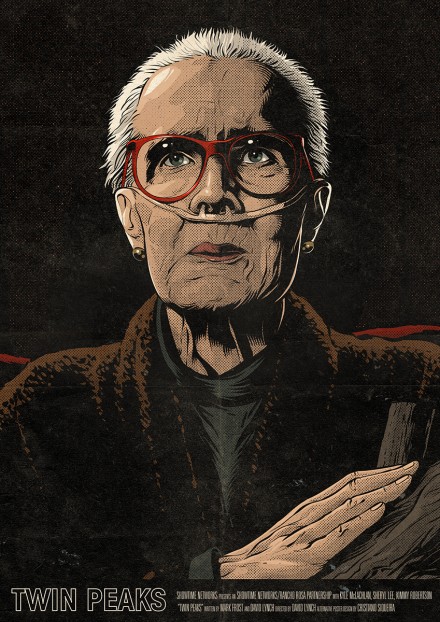
Image courtesy of Cristiano Siqueira
Catherine Coulson’s appearance as the Log Lady is breathtaking on two levels. One, it’s simply great to see one of Twin Peaks’ most iconic characters again, and two, it’s clear that Coulson very likely gave her performance from the comfort of her home in the final days of her life. Her appearance shimmers with the golden light of valedictory, of farewell, underlining the sense that old Mrs. Lanterman is carrying out the last of her great labors before she departs this realm. It’s fitting that one of Lynch’s oldest colleagues—she was a camera operator on Eraserhead, among other projects—should return for one last appearance. Further, there’s a cosmic rightness to the Log Lady calling on Hawk to investigate Coop’s disappearance. Hawk and the Log Lady are two of the show’s most spiritually awakened characters—rivaled only by Coop himself—and as fans have pointed out, no less than Agent Cooper himself told Hawk that if he ever got lost, he hopes Hawk’s the man they send to find him. (I’ll acknowledge here the problematic nature of Hawk’s spirituality; it’s a hoary old trope to often assigned to Native American characters. Sadly, Twin Peaks is packed with problematic content, from the relentless violence it inflicts on its women to the inescapable whiteness of its cast. But that’s a whole other essay.)[[See Ryan Diduck’s take on Lynch’s treatment of women in this issue here.
To that end, the season six finale bears that same sense of pain and loss. Remember when I said Diane was a cipher and that she didn’t do anything in season five? Well, Diane’s presence is finally paid off when Naido is revealed to be the real Diane, trapped these many years in the Mauve Lodge. Strangely, the fact that we don’t meet the real Diane until moments before reality is shattered feels cosmically right. Lynch has always been a master of showing us our dreams onscreen; the final moments of “The Past Dictates The Future” are a perfect expression of this mastery. Despite my misgivings about Diane as a character, it turns out that casting a performer as masterful as Laura Dern in the role was more than enough to fill in the lines of a character crafted from nostalgia, legend, and expectation. It pains me that Lynch and Frost so readily inflict rape and sexual assault on their female characters, but Dern captures Diane’s suffering with incredible empathy and skill—her every scene is electrifying. For Coop’s part in Diane’s storyline, I could very well imagine him on his deathbed, dreaming of a long-lost love and wishing he could travel back in time to right an old wrong. I could also imagine him saying some of his last lines on his actual deathbed: “I’ll see you at the curtain call.”
I may even use that line on my own deathbed.
But Lynch and Frost aren’t done with us yet. Season six ends by closing Twin Peaks into a narrative ouroboros—Coop travels back in time to prevent Laura’s murder, because after all, she’s an angel given to us by two ancient celestials. (I won’t bother to ask what happened to poor Ronette because it’s too heartbreaking.) The series seems to end on this bittersweet note—until the third holiday special rolls around.
Holiday Special: “What Is Your Name?”
Episode 3.18
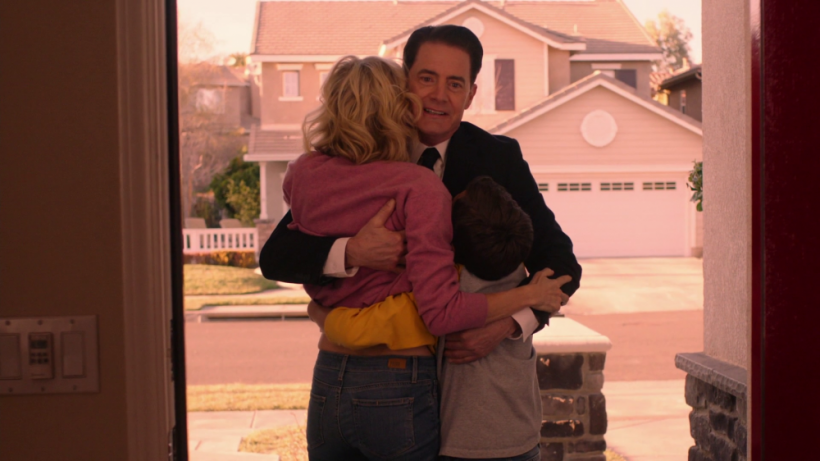
To close out Twin Peaks: The Whole Shebang, Lynch and Frost decimate our expectations and nostalgia by following their larger storyline—that of a universe slowly disintegrating—to its natural conclusion.
The universe falls apart.
Not the whole universe. Not every universe. But the universe we best know from Twin Peaks is essentially cast aside as Cooper and Diane slip across realities. As with most of the revival season, its ending rankled me at first, but within seconds of the finale’s ending, I found myself transfixed. I kept thinking, “Wow, those last episodes were packed with unforgettable images and great ideas.” The revival’s final scenes—starting after Frankie’s vanquishing of BOB—most recalled Lost Highway and Inland Empire for me; Lynch was depicting the kooky logic and dark magic of the subconscious with incredible skill and elegance, in the end creating a finale/holiday special that serve as perfect companion pieces to both “Got a Light?” and “Beyond Life and Death.”
There were also, obviously, deeply satisfying shades of Mulholland Drive, and therein lies one of this holiday special’s greatest triumphs. Lynch and Frost once again crafted an ending that can ably sustain (at least) two compelling readings — (1) The “crunchy mythology ending,” where Coop has somehow slipped into a nearby parallel reality, bringing with him the qualities of both Good Coop and Evil Coop, and (2) the “real reality” ending, where Twin Peaks never existed, where Coop and the town were always the creation of a troubled man named Richard, whose personality is an amalgam of Good Coop and Bad Coop.
If we take the second reading—the “real reality” reading—out for a spin, then we get loads of compelling payoff. Here’s one random example: I loved how the “real” version of Diane wore black, white and red; if Twin Peaks—and by association, the Lodges—are all the invention of Richard’s subconscious, how fitting is it that his estranged wife/partner manifests as a woman he mostly never sees, and whose appearance (again, that black, white, and red outfit and accoutrements) manifests as the Red Room itself, a claustrophobic realm of judgment and menace, whose floor looks like jagged fangs.
Of course, there are zillions of other readings, none of them as compelling as the brute fact that “What Is Your Name?” is beautifully unsettling and disturbing in a way I still struggle to describe.
Twin Peaks is magnificent and maddening, flawless and flawed. To be sure, I’ll never know if it was a good idea to sideline one of the greatest TV characters of the past quarter-century for sixteen episodes, but the end result was a rigorous examination of expectation and nostalgia that asked us what it feels like to say goodbye—to our loved ones, to the world, to ourselves. We’ll likely never see its equal.

